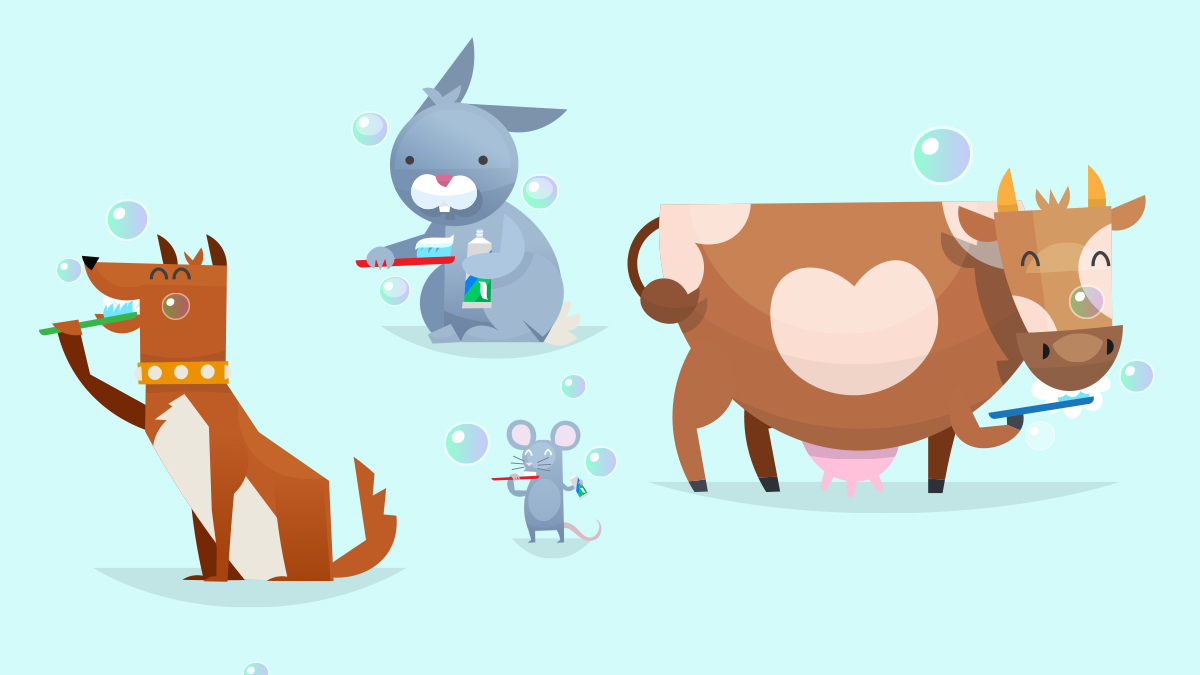How Do Animals Brush Their Teeth?
Using problem-based learning to teach across the curriculum in a first-grade classroom
As Dr. Seuss once said, “Teeth are always in style.” The students in my first-grade classroom understand the value and the implications of taking care of their teeth, as observed in the daily discussions and comments regarding the state of those teeth. So much so, my students have found immense joy learning about this hardest mineral found in the human body. I recognized their interest immediately and decided to create a class chart to display the monthly loss of their teeth. Little did I realize, the tooth fairy was in for some serious overtime. At the slightest sign of a tooth becoming unhinged, my students would twist and jerk the tooth free. It soon became a friendly competition to see who would have the most toothless gaps in their smile. I saw an opportunity to combine their fascination with teeth with a unit on the study of animals. I merged the students’ interest about their pearly whites with their passion for learning about animals into a project-based learning scenario based on animal teeth.
Project-based learning is an educational experience in which learning starts with a problem, students learn by doing, and the teacher functions as the guide instead of the “sage on the stage” (Dole, Bloom, and Doss 2017). Project-based learning should be student driven, realistic, and central to the intended learning goals (Tamim and Grant 2013). Effective project-based learning involves students working on a project over an extended period of time, focusing on an essential driving question that anchors the project, is relevant to students’ lives, creates a “need to know,” and leads to in-depth engagement with science and engineering practices (Krajcik, McNeill, and Reiser 2008). As a result, students develop deep content knowledge as well as critical thinking, creativity, and communication skills in the context of doing an authentic, meaningful project (Toolin 2004).
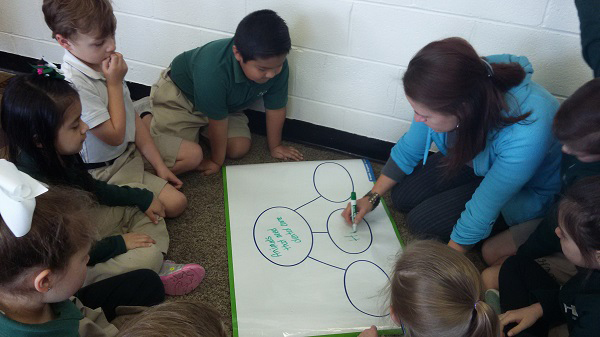
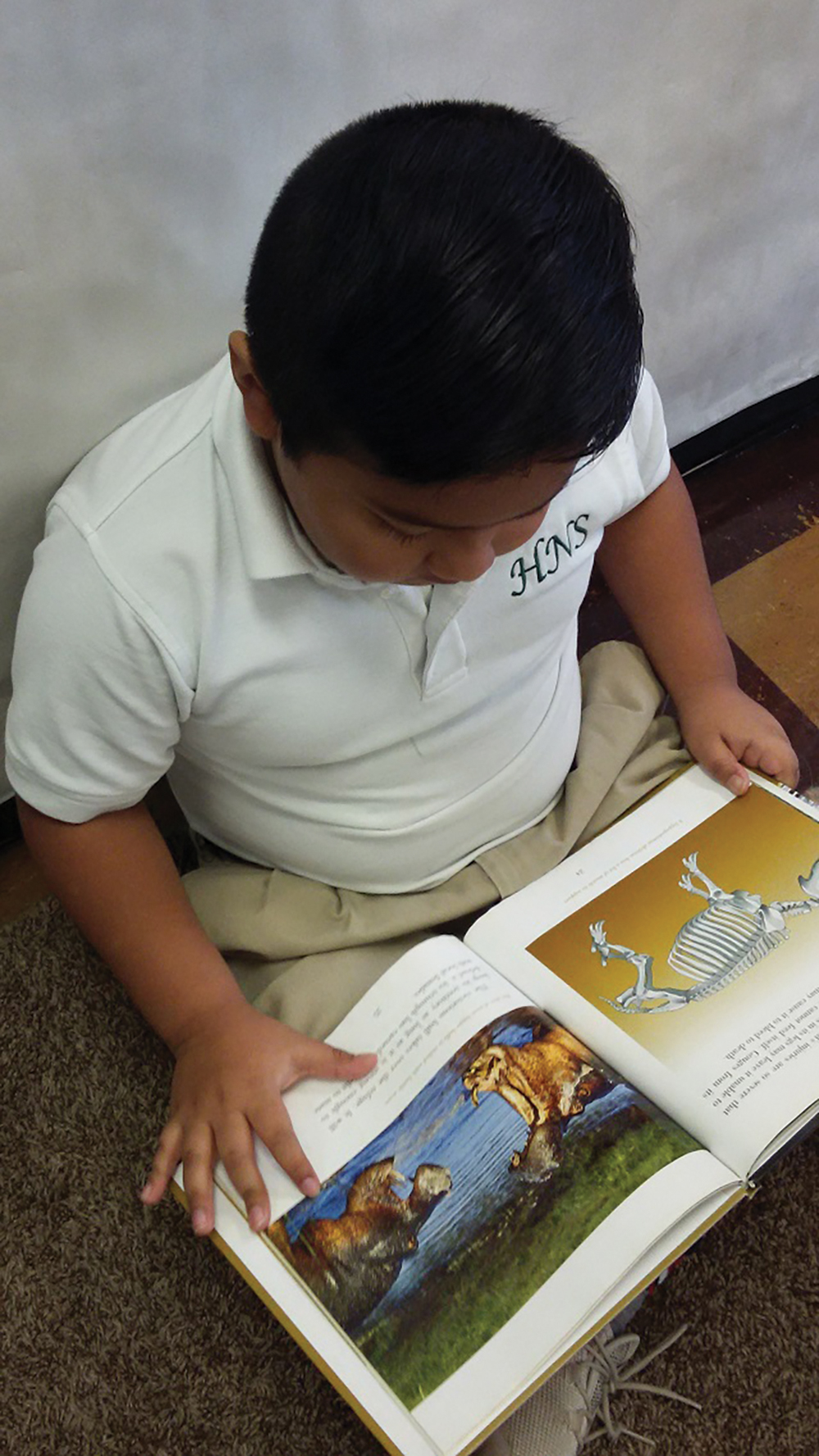
A five-day project-based learning experience was implemented that included an introduction to new children’s literature, hands-on investigation, completion of an activity book, and guided research which culminated with a challenge for the students to construct a toothbrush from the materials found in an animal’s natural habitat. The project described below provides a detailed account of the instruction and learning that took place in this first-grade classroom.
Day 1: What Do You Know About Teeth?
A focus on the students’ interest in their own teeth served as the introduction to this project. The children’s book Open Wide Tooth School Inside (Keller 2000) was read aloud to the class. Descriptions of tooth decay, enamel wear and tear, and the importance of dental care armed the students with background knowledge about human teeth. This prompted the class to engage in a lively discussion, which included the recognition that the types of food children typically consume, when given the freedom of choice, are those containing sugar as the main ingredient. The students also identified questions regarding unfamiliar topics. (e.g., How does the sugar in the liquids we drink affect human teeth and cause staining?) To further explore the topic the class decided an investigation was in order.
The materials that were compiled prior to class included: hard-boiled eggs (boiled by the teacher at home. Be sure to check for student allergies), clear plastic cups, apple juice, dark soda, brewed coffee, and toothbrushes. Students were told that the eggs represented the enamel on teeth. Eggs were used to simulate teeth because the shell is porous, so they would stain similarly to teeth. They believed that the selected liquids would reveal their effects on teeth when left overnight for continuous exposure. The setup for this investigation included filling each of the clear plastic cups with one of the three liquids and one hard-boiled egg. After the investigation was set up, the students were each given a worksheet to record their predictions of the effect of each liquid on the hard-boiled egg and the subsequent results.
Day 2: Did You Brush Your Pearly Whites?
The next day, the students examined and recorded the staining effects of the liquids on the eggs by coloring what each of the three eggs looked like on their worksheet. Students were then provided with toothbrushes and were told to brush each “tooth egg” to remove the overnight buildup with only water. After brushing, each student again recorded their results of the remaining tooth stains. This activity helped first graders conclude that some liquids are indeed harmful to human teeth because they contribute to tooth decay.
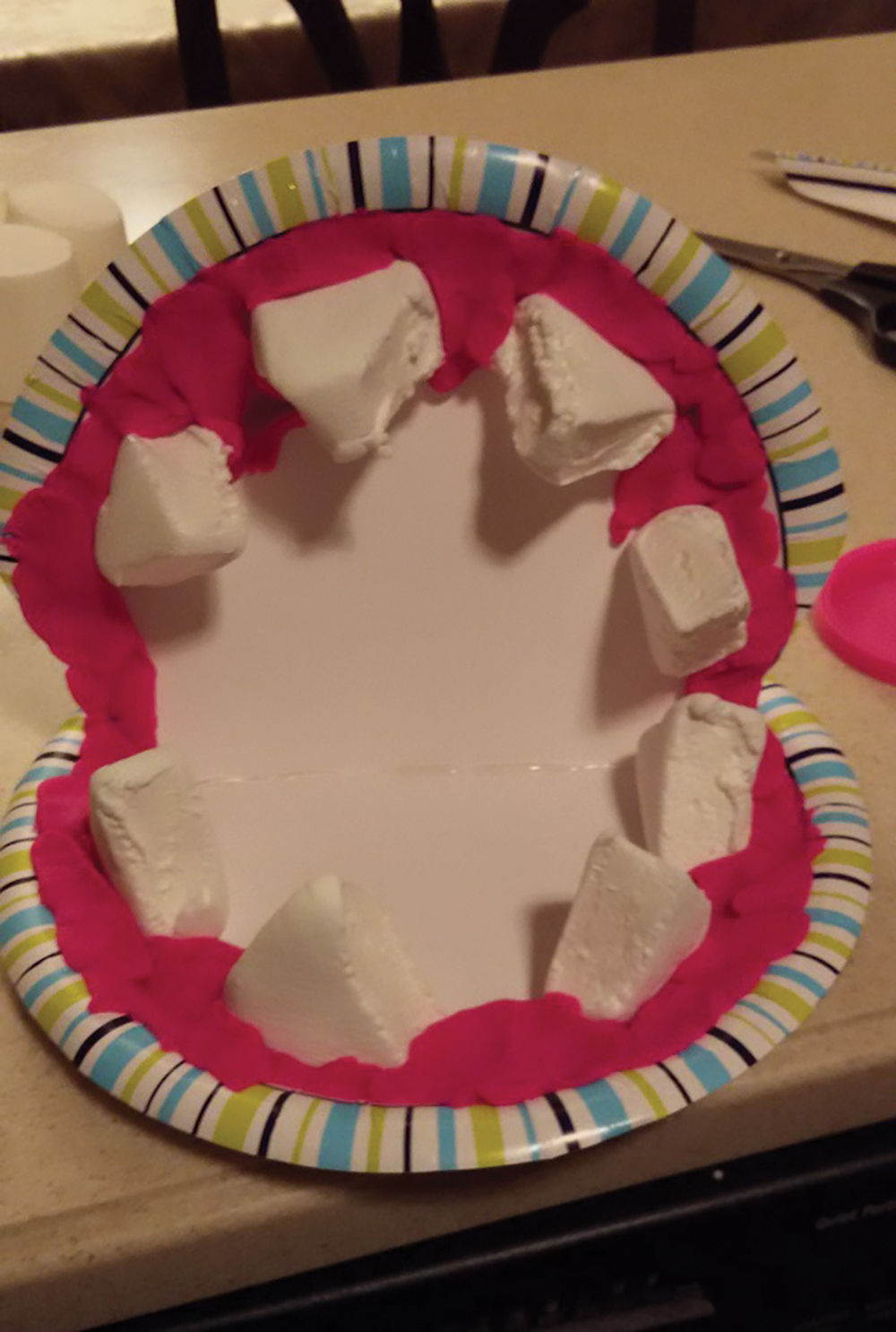
Based on the previous activities, students identified that humans work hard at caring for the health of their teeth. The next activity then shifted the focus from human to animal teeth. This prompted new questions from the teacher: “Do animals also need to take the same amount of concern that people do in the care of their teeth?” “If animals don’t have hands, how can a toothbrush be used?” “Does the food an animal eats affect their teeth in the same way as humans’ diet affects their teeth?” Our class set out to explore the possible answers to these questions.
Day 3: Can Animals Brush Their Teeth?
A PBS Learning Media short video clip, “What Do Animals Eat?” was shown, after which the students, as a whole group, listed the foods animals consume. Then they brainstormed the possibility of how animals could brush their teeth. Guiding questions for the students included, “Do you think animals need to brush their teeth?” “How you do think animals brush their teeth?” Finally, the students were asked to formulate some theoretical dental hygiene plans that animals could use. Some student suggestions included using toothpaste, having a veterinarian help clean them, and rubbing them on a tree or log.
The next step of the project focused on the research process, moving away from general to specific ideas. First, the students were asked to come up with a list of animals that have “cool teeth.” They were encouraged during this brainstorming to include animals that are uncommon to the region in which they live. The entire class then compiled a list of their chosen animals that were narrowed down to the choice of two animals with the “coolest teeth.” The class selected a crocodile and a hippo.
The class was split into two groups, crocodiles and hippos, and students then conducted research on their animal. Through the use of individually assigned, age-appropriate informational books and websites. Both groups recorded their individual findings on a fact sheet. Once each student within the group explored his or her assigned book or website, all students in the same animal group assembled again to teach each other the facts they had learned. This exercise allowed the students to collaborate and co-construct knowledge of their chosen animal.
The different animal groups then converged into a whole class to discuss each animal’s natural habitat, diet, and hunting rituals. Using a Venn diagram, a tool the class had a familiarity with and used multiple times practicing various reading strategies, the whole class identified the similarities and differences of crocodiles and hippos. It should be noted that this research process was highly beneficial to the three English language learners (ELLs) in the classroom. The research process provided these students with a platform to naturally strengthen their language and social skills. They could discuss and instruct peers despite their minimal proficiency when communicating in the English language.
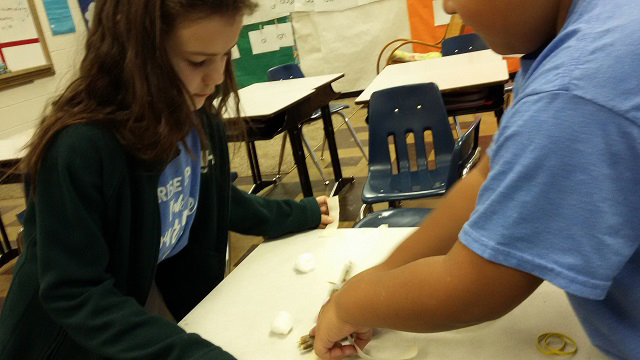
Day 4: How Will You Design an Animal’s Toothbrush?
Each student was provided an activity booklet that I created and was based on their animal to guide their learning. The students were introduced to the animal’s need for a working toothbrush model. Through a self-created fictional story scenario provided, the students were introduced to the problem: The animal (hippo or crocodile) needs a toothbrush. The challenge for them was to construct a toothbrush from the materials found in that animal’s natural habitat. The first step in this design process was to divide the students into their previously assigned groups based on the animal each student chose to study. From there, the two groups were placed in an equal pairing of students. The pairs were matched based on similar reading levels. This was advantageous because research materials could be selected that were accessible for both students.
Next, each group was required to undergo extensive planning of their model. The pairs discussed, drew, and labeled a possible toothbrush design for their particular animal. The toothbrush needed to fulfill two main requirements: (1) the size of the toothbrush would need to appropriately fit the animal’s mouth, (2) the toothbrush must be able to remove leftover remnants of food from the animals’ gums and teeth. During this step, all pairs of students were observed using their reasoning skills. Many were arguing out their thoughts about how the toothbrush should be designed, which engendered spirited, content-related conversations. Student conversations included arguments over stick length and how it could be made longer to reach the back of the teeth and where the tape should be placed so the materials would stay attached to the stick.
Before implementing this project, a variety of natural and manufactured resources were gathered that the student pairs would choose from when building their toothbrush model. The natural resources included grass, leaves, feathers, mud, moss, various tropical plants, and tree branch sticks. The manufactured resources included craft sticks, cotton balls, rubber bands, string, scissors, tape, and glue. The student pairs were encouraged to brainstorm what materials they would choose to work with by making a personalized list of the materials that were provided by the teacher. They were further guided to have a balanced amount in use of natural and manufactured resources in the design of the toothbrush. The teacher had to determine the quantity needed of each resource since there were 15 students in the class. The teacher collected the materials herself from the local environment. However, an extension of the project could include requesting the students to collect materials and bring them into class themselves.
Day 5: What Does an Animal’s Toothbrush Look Like?
The final phase of the project was the construction of the toothbrush models. While monitoring the progress of each student pair, it could be observed the pairs employed their creativity and collaborated effectively to build a successful toothbrush model. Prior to class, I had constructed a model of both the hippo’s and crocodile’s teeth by cutting and pasting marshmallows into the shape of the animals’ mouth onto two paper plates positioned to resemble a working jaw and mouth. To complete these models, pink modeling clay was added to simulate the gums. To simulate food buildup in the animal’s mouth, chocolate pudding was spread on the gums and teeth. (Remember to check for student food allergies and remind students to not eat food products used in modeling.)
Each student pair tested the effectiveness of their toothbrushes by brushing the model’s teeth. The materials such as the leaves, feathers, cotton balls, and grass comprised the bristles of the toothbrushes, which captured the food particles. After the brushing was complete, they presented the amount of food particles that their toothbrush design had captured. First, we did a visual examination of the amount of food particles their toothbrush had captured. For a more scientific (reliable) method, the students went back to their desk to gently take their toothbrush and brush off the food particles onto a paper towel (the bib you wear when you get your teeth cleaned at the dentist office). This was done by simply wiping the bristles of their toothbrushes onto paper towels. I asked the students to lightly draw a circle on the paper towel around their captured food particles. Again, we did a visual comparison of our drawn circles. We decided that whomever had the largest circle of food particles would have the most successful toothbrush design capturing the most particles on their animal’s teeth.
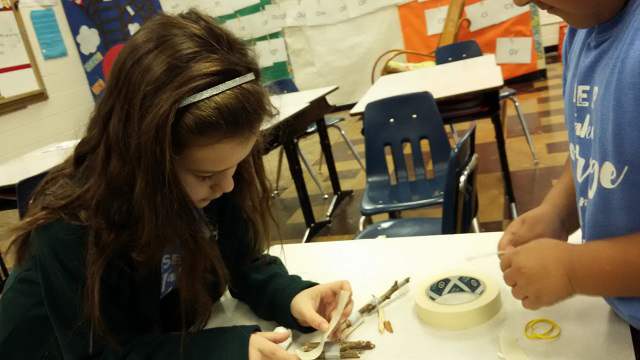
Students were asked about the features of their toothbrush through questions such as, “What features did you personally suggest the toothbrush should have?” “Do you think your suggestion helped the toothbrush succeed or fail when trying to capture the food particles from the animal’s mouth?” “What materials did you personally choose for the design?” “Were the materials you chose the reason to explain why your toothbrush was a success or why it failed?” Students were then asked to draw a revised version including at least one improvement they could make to the design of their toothbrush (Figure 1). Comments and suggestions made by students included, “we should have added more bristles,” “we didn’t use enough tape,” and “I told you we should have used feathers instead.”
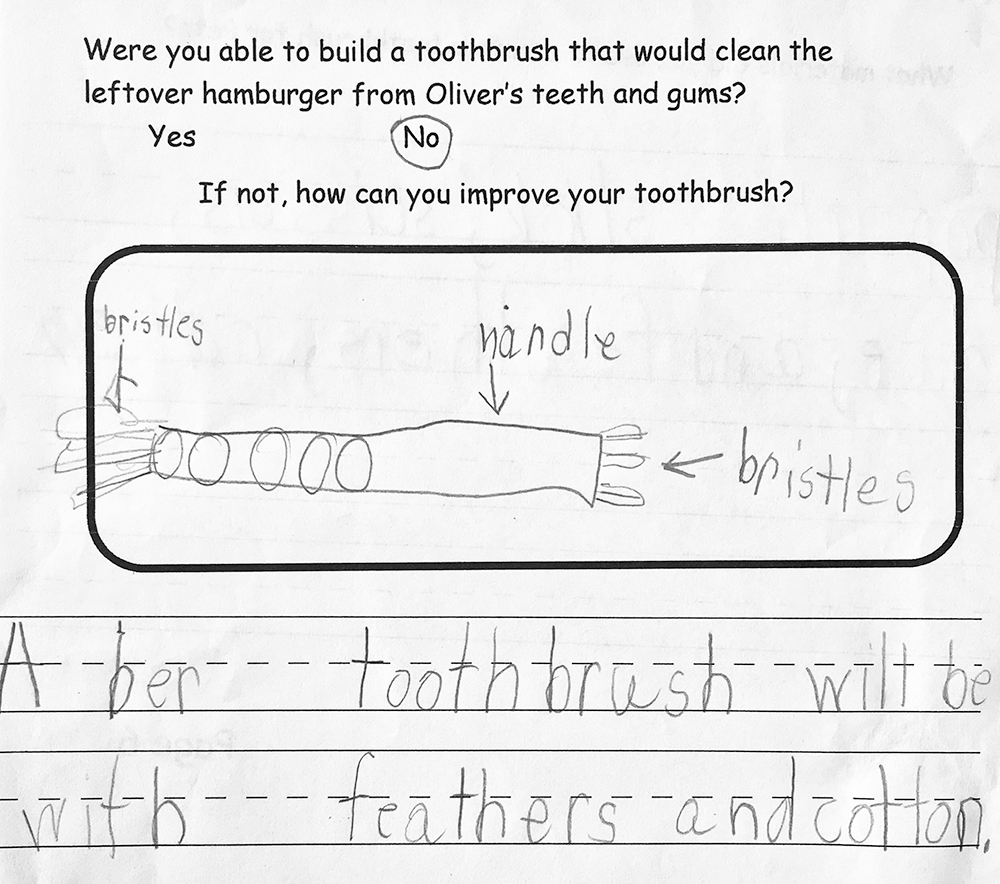
The project culminated with two evaluated assessments of each pairs’ toothbrush model; a peer evaluation and a teacher assessment. The peer evaluation asked, “Did the pair work together as a team?” and “Did the pair listen and share ideas with each other?” Additionally, a teacher evaluation rubric was created, assessing individual roles in the process, the quality of work produced, the amount of the individual effort put forth, and the individual’s work habits (see NSTA Connection).
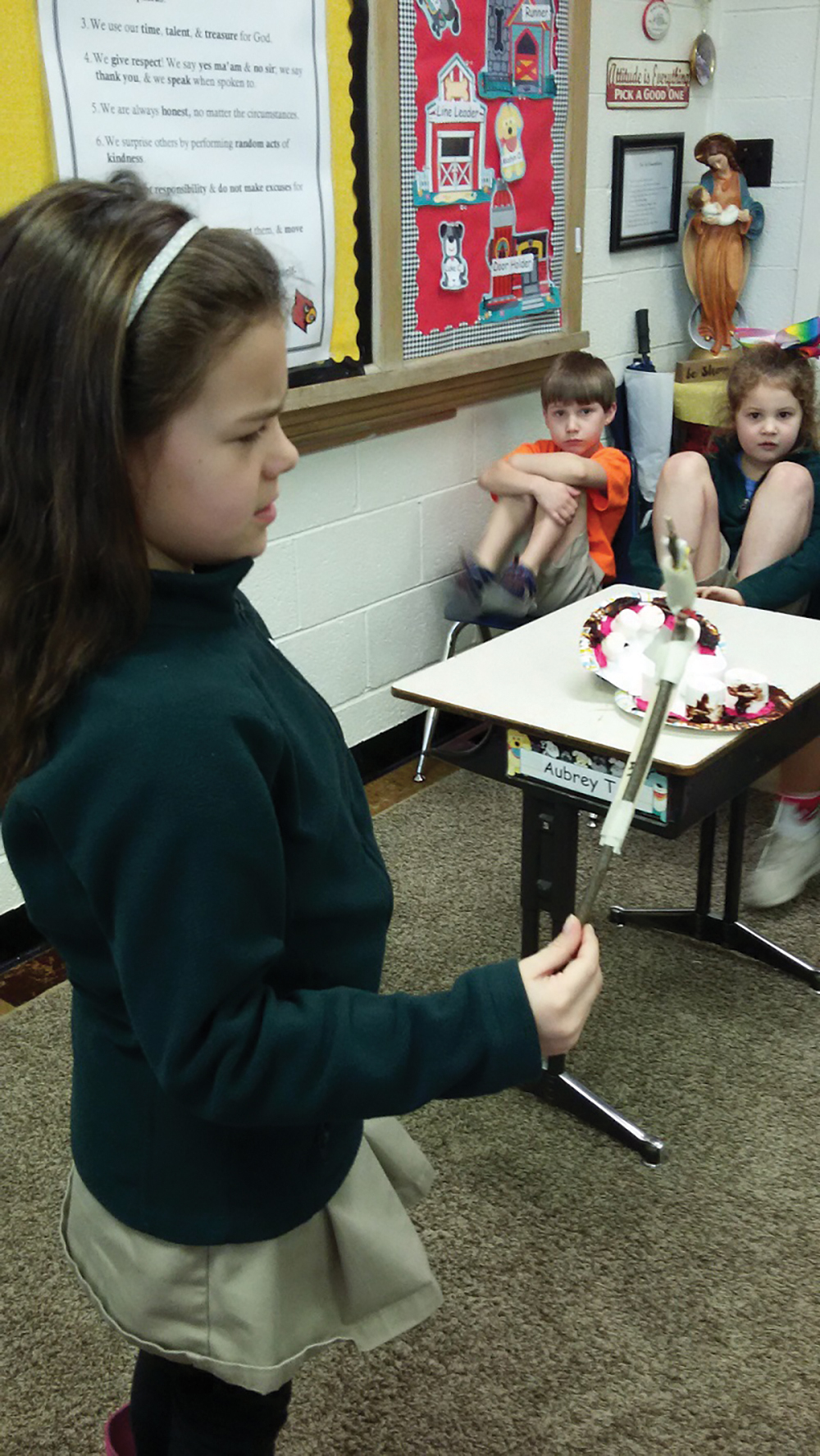
Conclusion
This project challenged the students to work in a group, complete independent research on the topic, construct a working prototype, and present the effectiveness of a toothbrush model for a specific animal using natural and manufactured materials. Although project-based learning was originally designed for older students, this approach was highly successful for these first graders. While curriculum designed as project-based learning is not suitable for use with every science standard, this methodology can be used when teaching concepts that naturally contain some flexibility. With small adaptations, teachers can implement these practices into the classroom regardless of the grade level. Working with first-graders and providing them with strong parameters to work within, each pair of students in the class was able to fulfill the requirements as they collected and interpreted data to draft a solution to the problem, and presented their findings in an environment that embodied differentiated learning.
NSTA Connection
Download data sheets, a resource list, rubric, and other resources at www.nsta.org/SC0119.



